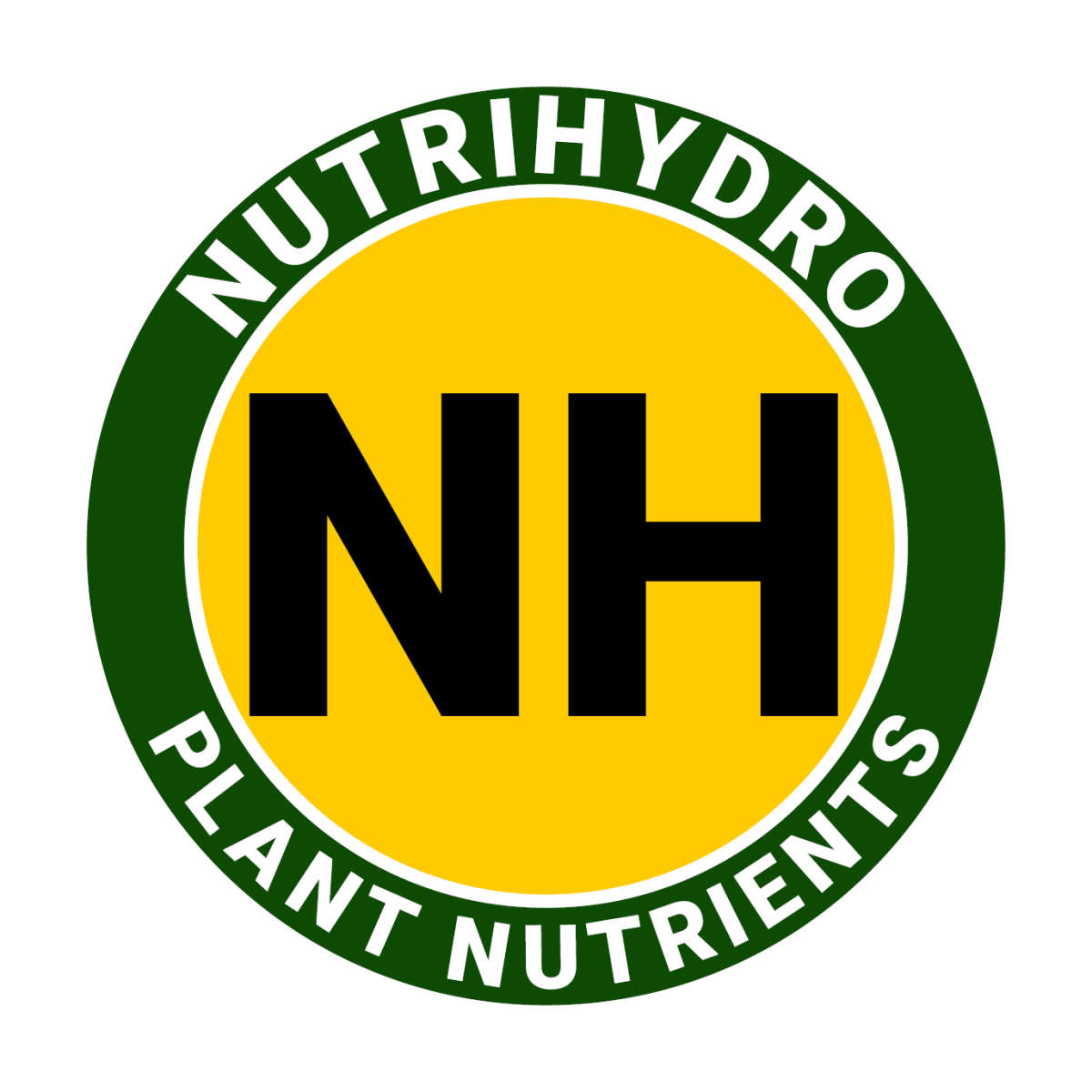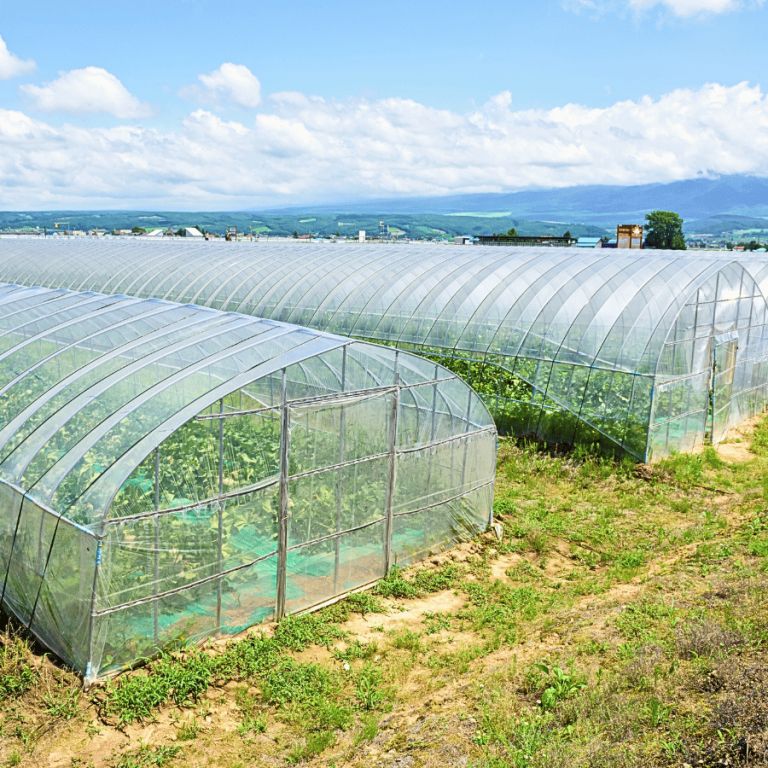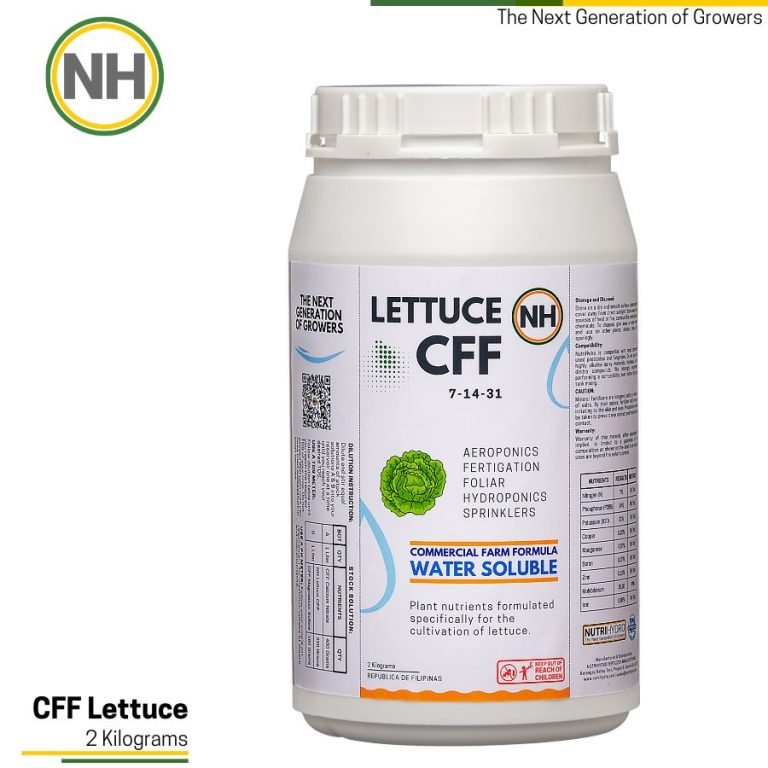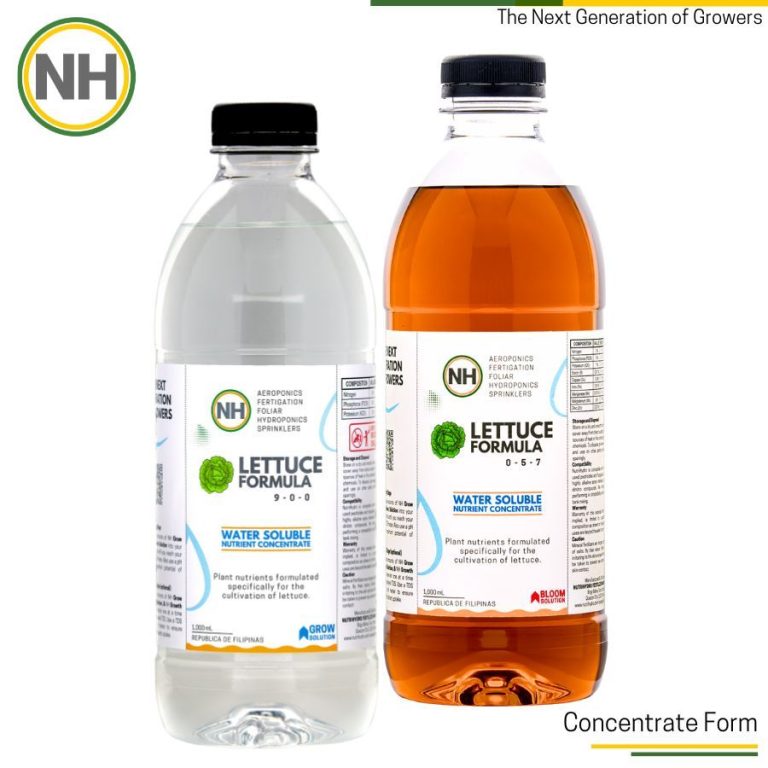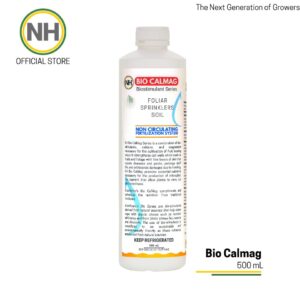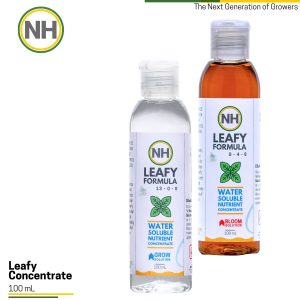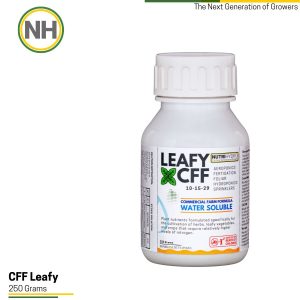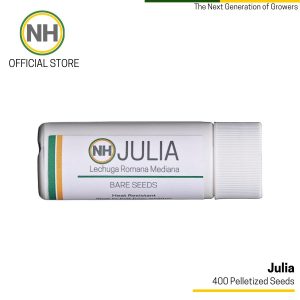
The Next
Generation of Growers
NUTRIHYDRO LEAFY FORMULA
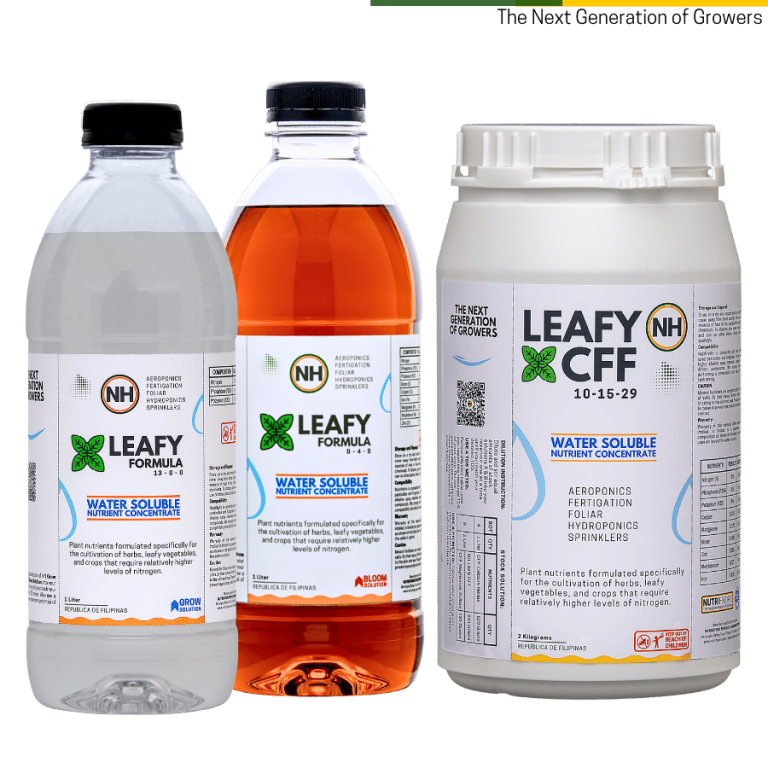
The NutriHydro Leafy Formula is designed specifically for the growth and nourishment of leafy greens and high nitrogen-requiring crops. Comprised of NutriHydro Leafy Nutrient Solution Concentrate and NutriHydro Leafy Commercial Farm Formula (CFF), these products deliver high-quality nutrients and is a complete suite of micronutrients necessary for the optimal growth of your crops.
The NutriHydro Leafy Formula is perfect for a wide array of growing methods, including hydroponics, aeroponics, drip irrigation, foliar, and sprinklers, providing versatility and adaptability for different farming setups.
The NutriHydro Leafy Nutrient Solution Concentrate is designed for maximum convenience. Composed of Solutions A and B, growers simply pour equal portions into water until the desired Total Dissolved Solids (TDS) level is achieved. This ensures your crops receive the necessary nutrients in the right proportions without the hassle of complicated measurement and mixing procedures.
The NutriHydro Leafy Commercial Farm Formula, also known as CFF, is the go-to solution for large-scale farming. This dry form product needs to be first diluted in Solutions A and B. Once the concentrate is prepared, equal amounts of the solution can then be added to water. The nutrient level can be easily monitored and adjusted using a TDS meter until the desired concentration is reached.
The NutriHydro Leafy Formula product line ensures the health and productivity of your leafy crops with a precise, balanced, and high-quality nutrient formula, catering to both small-scale and commercial farming needs.
NutriHydro Leafy Nutrient Solution Concentrate
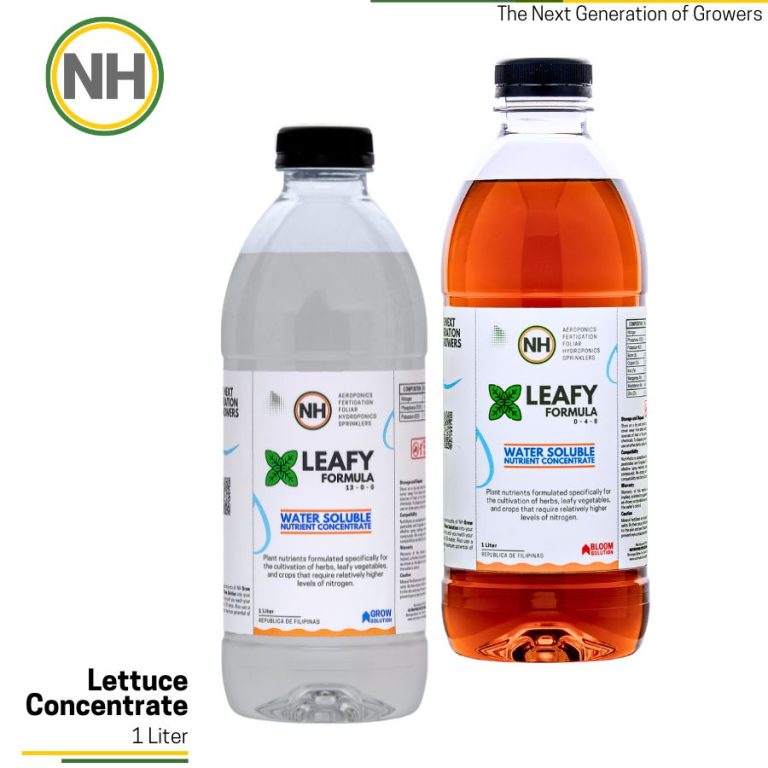
Effortless Nutrition for your Leafy Greens
The NutriHydro Leafy Nutrient Solution Concentrate is a top-tier, balanced nutrient solution, specifically designed for leafy greens and high nitrogen-requiring crops. This product is your go-to solution for easy and efficient crop nutrition.
Ease of Use: With NutriHydro Leafy Nutrient Solution Concentrate, nutrient management is a breeze. Simply pour equal parts of Solutions A and B into your water until you reach the desired Total Dissolved Solids (TDS) level. This takes the guesswork out of nutrient application, allowing you to focus more on the growth and health of your crops.
Quality and Convenience: Composed of high-quality nutrients and a full range of micronutrients, this concentrate ensures your crops are receiving all the nutrients they need in the right proportions. Its convenient liquid form allows for quick preparation and immediate use.

Time Saving
Focus on cultivation.

Consistent Formulation
NutriHydro Leafy Commercial Farm Formula
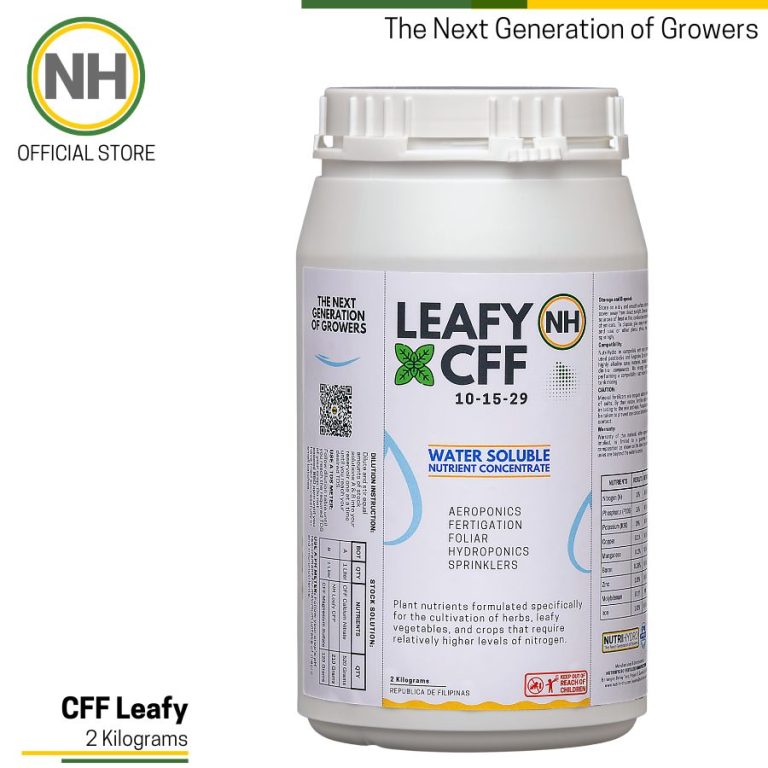
Maximizing Crop Yield for Commercial Farms
The NutriHydro Leafy Commercial Farm Formula (CFF) is tailored for the needs of large-scale farming operations. This dry form product delivers the same balanced, high-quality nutrition found in the NutriHydro Leafy Nutrient Solution Concentrate, but in a format designed for commercial applications.
Economy and Control: CFF offers an economic and controlled approach to large-scale farming. The dry form allows for easy storage and transport. After dilution in Solutions A and B, you can adjust the nutrient levels with precision using a TDS meter, ensuring your crops receive the exact nutrition they need.
Versatility: CFF is designed to be adaptable to different farming setups. Whether you’re using hydroponics, aeroponics, drip irrigation, foliar, or sprinklers, CFF can accommodate your farming method without compromising nutrient delivery.

Time Saving
Focus on cultivation.

Consistent Formulation
NutriHydro Leafy Commercial Farm Formula Comparative Analysis
Both the NutriHydro Leafy Nutrient Solution Concentrate and the NutriHydro Leafy Commercial Farm Formula deliver the same high-quality, balanced nutrition to your crops. The key difference lies in their format and intended use.
The Nutrient Solution Concentrate is a perfect choice for growers seeking convenience and simplicity. Its liquid form allows for immediate use and easy nutrient management, making it ideal for smaller scale operations or those new to farming.
On the other hand, the Commercial Farm Formula is the optimal solution for larger operations. Its dry form makes it economical for storage and transport, and it provides the flexibility to precisely control nutrient levels according to the specific needs of your crops.
In essence, NutriHydro Leafy Formula offers a product for every grower, regardless of scale or expertise. Choose the Nutrient Solution Concentrate for simplicity and convenience, or the Commercial Farm Formula for control and scalability. Either way, you’re assured of superior nutrition for your leafy greens and high nitrogen-requiring crops.
Leafy Nutrient Calculators
Leafy nutrient calculators are available for nutrient solution concentrate and CFF . These calculators allow users to have a predetermined guide on how much nutrient to dilute in water. Do note however that the results from the calculators are a calibrated guide. Users should refer to their results from their respective TDS meters. We encourage growers to use proper and well maintained TDS meters and that the probes are replaced on a periodic schedule. At NutriHydro, we replace our probes once a year. The success of growers who use NutriHydro rely on accuracy.
NH Leafy Nutrient Solution Concentrate Calculator
NH Leafy CFF Stock Solution Calculator
Related Products

